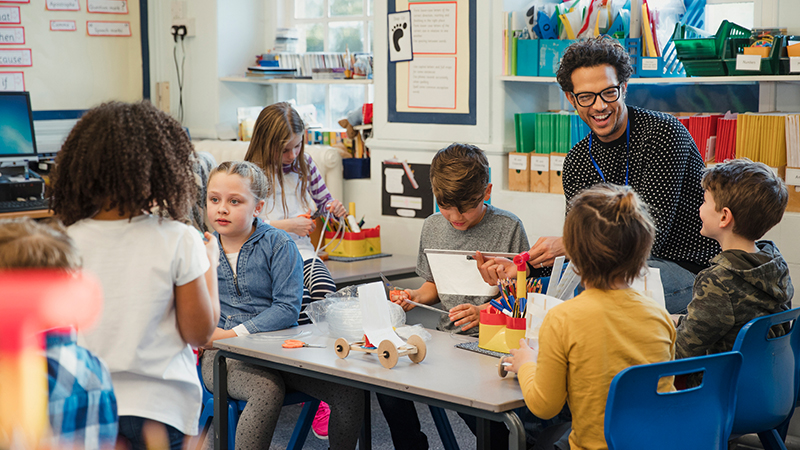What is the key to a successful school year? The answer is one word: routines. By establishing effective classroom routines, you will enable your students to feel empowered when they enter your room and to concentrate on what they are learning. It will also enable you to have a smooth, organized, and well-run classroom.
Establishing Routines
As you think about your classroom routines, it’s important to remember that students are like snowflakes: no two are the same. So, you need to think about how best to accommodate the needs of all of your students. That being said, all students benefit from classroom routines and clear expectations. To help students successfully adopt your classroom routines, make sure to teach them on the first day of class or early in the school year and to set aside time to practice and review often.
Here are pointers to help you create effective routines.
Movement
Think about how you and your students will move around during class.
- Are students allowed the autonomy to move around freely?
- Do they need to obtain permission before getting out of their seats?
Again, this is going to depend on the needs of your students. To ensure your routines are successful, answer these questions:
- How much freedom will you allow students to have?
- What is your restroom policy? Can students go at will or will you have a set number of allowed times for restroom breaks?
- Do students need to ask permission before getting out of their seats or leaving the room?
Bathroom Breaks
One idea for restroom breaks is to establish a routine in which students sign out using a sign-out sheet by the door. As students are working independently, allow them to use the restroom as needed while also making sure that they aren’t abusing their freedom. It’s important that you let students know that they are trusted to regulate this themselves. To ensure success, create a bathroom hall pass. The rule is simple: a student cannot leave the room if the pass is being used by another student. Students sign in and sign out by writing their name, the date, and the time they left and returned. This routine gives students accountability and provides you with a record of when students were out of the room. At the same time, a bathroom routine frees up your time to focus on instruction instead of writing out passes and answering requests to use the restroom.
You can use a similar procedure to allow students to sharpen their pencils, get a tissue, or retrieve necessary supplies.
- Are they able to get up on their own?
- Do you mind them moving around during direct instruction, or are they to remain in their seats?
Understanding your comfort level with students moving around during direct instruction and independent practice is important to making classroom routines that fit both your style and your students’ needs.






